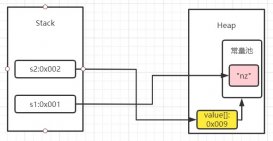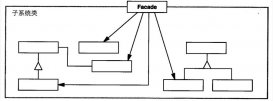同步锁分类
对象锁(this)
类锁(类的字节码文件对象即类名.class)
字符串锁(比较特别)
应用场景
在多线程下对共享资源的安全操作。
需求:启动5个线程对共享资源total进行安全操作。
同步锁在多线程单例模式下的使用
以上三类同步锁都可以。
|
1
2
3
4
5
6
7
8
9
10
11
12
13
14
15
16
17
18
19
20
21
22
23
24
25
26
27
28
29
30
31
32
33
34
35
36
37
38
39
40
41
42
43
44
45
46
47
48
49
50
51
52
53
54
55
56
57
58
59
60
61
62
63
64
65
66
|
package cn.myThread;public class MyThread implements Runnable { private static int total = 10; @Override public void run() { synchronized (this){ //使用this对象锁 //synchronized (MyThread.class){ //使用MyThread.class类锁 //synchronized (""){//使用字符串锁 System.out.println(Thread.currentThread().getName() + "正在运行"); try { Thread.sleep(100); } catch (InterruptedException e) { e.printStackTrace(); } total--; System.out.println(total); System.out.println(Thread.currentThread().getName() + "线程结束"); } }} package cn.test;import cn.myThread.MyThread;public class TestMyThread { public static void main(String[] args){ MyThread myThread = new MyThread(); Thread thread = null; for (int i = 1 ; i <= 5 ; i++){ thread = new Thread(myThread,"线程"+i); //开启5个线程,传入同一个对象 thread.start(); } }} 线程1正在运行9线程1线程结束线程3正在运行8线程3线程结束线程5正在运行7线程5线程结束线程2正在运行6线程2线程结束线程4正在运行5线程4线程结束 |
分析:从运行结果可以看出5个线程串行执行同步锁里面的代码,因为5个线程中的同步锁对象this指向同一个的对象(同步锁对象MyThread.class类锁是同一个对象、同步锁对象 ”” 字符串锁是同一个对象),所以5个线程会串行执行同步锁里面的代码。
同步锁在多线程多例模式下的使用
错误用法
|
1
2
3
4
5
6
7
8
9
10
11
12
13
14
15
16
17
18
19
20
21
22
23
24
25
26
27
28
29
30
31
32
33
34
35
36
37
38
39
40
41
42
43
44
45
46
47
48
49
50
51
52
53
54
55
56
57
58
59
60
61
62
63
|
package cn.myThread;public class MyThread implements Runnable { private static int total = 10; @Override public void run() { synchronized (this){//使用this对象锁 System.out.println(Thread.currentThread().getName() + "正在运行"); try { Thread.sleep(100); } catch (InterruptedException e) { e.printStackTrace(); } total--; System.out.println(total); System.out.println(Thread.currentThread().getName() + "线程结束"); } }} package cn.test;import cn.myThread.MyThread;public class TestMyThread { public static void main(String[] args){ Thread thread = null; for (int i = 1 ; i <= 5 ; i++){ thread = new Thread(new MyThread(),"线程"+i);//开启5个线程,传入5个不同对象 thread.start(); } }} 线程2正在运行线程1正在运行线程3正在运行线程5正在运行线程4正在运行9798线程1线程结束线程5线程结束线程2线程结束线程3线程结束6线程4线程结束 |
分析:从运行结果可以看出5个线程并行执行同步锁里面的代码,因为5个线程中的同步锁对象this指向5个不同的对象,所以5个线程会同时执行同步锁里面的代码。
正确用法
方式一:
|
1
2
3
4
5
6
7
8
9
10
11
12
13
14
15
16
17
18
19
20
21
22
23
24
25
26
27
28
29
30
31
32
33
34
35
36
37
38
39
40
41
42
43
44
45
46
47
48
49
50
51
52
53
54
55
56
57
58
59
60
61
62
63
|
package cn.myThread;public class MyThread implements Runnable { private static int total = 10; @Override public void run() { synchronized (MyThread.class){//使用MyThread.class类锁 System.out.println(Thread.currentThread().getName() + "正在运行"); try { Thread.sleep(100); } catch (InterruptedException e) { e.printStackTrace(); } total--; System.out.println(total); System.out.println(Thread.currentThread().getName() + "线程结束"); } }} package cn.test;import cn.myThread.MyThread;public class TestMyThread { public static void main(String[] args){ Thread thread = null; for (int i = 1 ; i <= 5 ; i++){ thread = new Thread(new MyThread(),"线程"+i); //开启5个线程,传入5个不同对象 thread.start(); } }} 线程1正在运行9线程1线程结束线程5正在运行8线程5线程结束线程4正在运行7线程4线程结束线程3正在运行6线程3线程结束线程2正在运行5线程2线程结束 |
分析:从运行结果可以看出5个线程串行执行同步锁里面的代码,因为5个线程中的同步锁对象MyThread.class类锁是同一个对象,所以5个线程会串行执行同步锁里面的代码。
方式二:
|
1
2
3
4
5
6
7
8
9
10
11
12
13
14
15
16
17
18
19
20
21
22
23
24
25
26
27
28
29
30
31
32
33
34
35
36
37
38
39
40
41
42
43
44
45
46
47
48
49
50
51
52
53
54
55
56
57
58
59
60
61
62
63
|
package cn.myThread;public class MyThread implements Runnable { private static int total = 10; @Override public void run() { synchronized (""){//使用字符串锁 System.out.println(Thread.currentThread().getName() + "正在运行"); try { Thread.sleep(100); } catch (InterruptedException e) { e.printStackTrace(); } total--; System.out.println(total); System.out.println(Thread.currentThread().getName() + "线程结束"); } }} package cn.test;import cn.myThread.MyThread;public class TestMyThread { public static void main(String[] args){ Thread thread = null; for (int i = 1 ; i <= 5 ; i++){ thread = new Thread(new MyThread(),"线程"+i); //开启5个线程,传入5个不同对象 thread.start(); } }} 线程1正在运行9线程1线程结束线程4正在运行8线程4线程结束线程5正在运行7线程5线程结束线程3正在运行6线程3线程结束线程2正在运行5线程2线程结束 |
分析:从运行结果可以看出5个线程串行执行同步锁里面的代码,因为5个线程中的同步锁对象 ”” 字符串锁是同一个对象,所以5个线程会串行执行同步锁里面的代码。
以上这篇java同步锁的正确使用方法(必看篇)就是小编分享给大家的全部内容了,希望能给大家一个参考,也希望大家多多支持服务器之家。
原文链接:http://www.cnblogs.com/zhuwenqi2016/p/7419356.html















